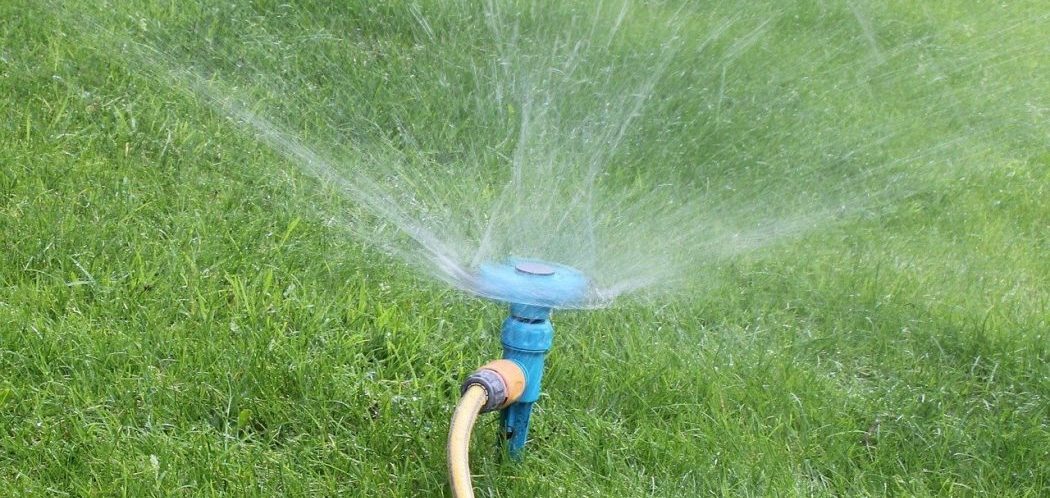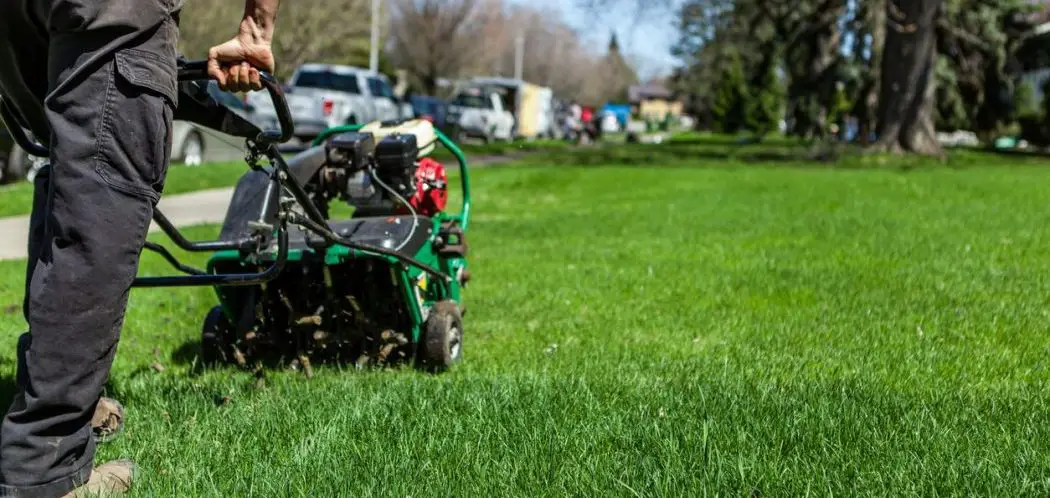When you put down new grass seed, those first few days and weeks are crucial. If the seed isn’t given enough water and care, it won’t set in to grow the beautiful grass you put it down there for in the first place. To get the thick, lush grass that you want and deserve, you actually have to start before the seeds are even planted.
This is where expert watering is so important. Several days before you’re planning to plant the seeds, you should make sure the ground is good and wet down to around six to eight inches. Water it thoroughly, then insert a screwdriver down about six to eight inches into the soil. If it doesn’t go all the way down to eight inches or so, you’ll know that you need more water.
At the Beginning
Even though the ground will be good and wet before you plant the seeds, you’ll still want to water the entire area for roughly 5-10 minutes after the seeds are planted. In fact, you’ll have to maintain moisture on your lawn for a while because when new grass seeds are allowed to dry out, they’ll die.
The amount and frequency of water that the seeds need to get will vary depending on where you live and how much rain you’re expecting. As a general rule, it’s a good idea to water your new grass seeds for 5-10 minutes twice a day until the grass starts to grow. You’ll want to water enough so that the first few inches of soil are good and wet.
You should also water in the mornings and evenings and not in the hottest part of the day. Try to water before 10 a.m. and after 6:00 p.m. each day, because that’s when the temperatures are the coolest. If you water your lawn in the middle part of the day, the sun will quickly evaporate the moisture and the water may not be enough to keep the lawn moist enough to grow properly.
Don’t forget that you can use the screwdriver trick to test the soil anytime you like. If the screwdriver doesn’t go several inches into the soil, you need to water some more!
How to Water Your Lawn
To water a large lawn, it might be best if you use one of those rectangle-shaped sprinklers that cover a large area. This way, a large area can be covered and it won’t take as long for the soil to get moist. Small spot sprinklers are good for smaller lawns, but the main thing to remember is to let the sprinkler run for 5-10 minutes twice a day so the grass seeds can become one with the soil, so to speak. This is the only way to make sure that the seeds have a chance to grow and thrive.
Here is a basic timeline of how to water your lawn in the time before and after you plant your grass seeds:
- Two or three days before planting: water once a day and make sure that the water reaches six to eight inches deep.
- Immediately after planting: water once a day and make sure that the water reaches three to four inches deep. Water for 5-10 minutes at a time.
- Until the seeds sprout: water twice a day and make sure that the water reaches one to two inches deep.
- Once your lawn is established (after the seeds sprout): water until the water reaches one inch deep.
When your grass becomes established and looks good, you can slowly decrease the evening watering until you’re no longer watering in the evening time. Still, you’ll want to continue with your morning waterings, and don’t forget to water before 10 o’clock in the morning.
As far as how long it takes to get a nice-looking lawn, that depends on where you live and the overall condition of your lawn. It can take as little as three days or as much as 28 days for new grass seed to begin to grow.
In the meantime, you’ll have to continue watering on a regular basis until the seeds start to sprout. Once the grass is nice and thick like you want it to be, you still have to water it regularly so it stays healthy, but you won’t have to water it as much as you do in the beginning.
Tips for Making Sure That Your Grass Seed Produces a Beautiful Lawn
Making sure that your lawn is well watered is the key to getting a gorgeous lawn that everyone will notice. While it’s not a difficult task to keep up with, there are still a few things that you need to remember to ensure that everything is done correctly until the lawn starts coming in.
These include the following:
- If you’re putting grass seed over an existing lawn, you’ll want to mow the lawn until the grass is short and remove all of the clippings before you lay down the seed.
- If you have thatch that is more than one-half to three-quarter inches, you’ll need to use a dethatching machine before laying down the seeds. This is because the seeds have to come into contact with the soil, and thatch only prevents that from happening.
- If you have mostly soil or sparse grass in your yard, use a rake to loosen up the top one-half inch of soil before planting the seeds. This will make the seeds much easier to be raked into the soil after you plant them.
- You may want to consider a soil test before you get started and use a “starter” fertilizer depending on the results. You can even apply this type of fertilizer 5-14 days after you plant the seeds. It helps the seeds to take root and grow much better.
- Never let the soil dry out completely or it can disrupt the growth of the grass. That being said, if you are planting seeds in bare soil, never over-water and flood the soil because that can be worse than not watering the soil enough.
- When you’re raking the seeds into the soil, don’t be alarmed if you can’t get every single one of the seeds covered. As long as most of them are covered up by the soil, they should take root properly.
- Plant cool-season grass in the fall and warm-season grass in the spring. Keep in mind that warm-season grass may take longer to start growing.
- Once the grass is several inches high, start watering your lawn every two to three days, depending on where you live. The soil should be slightly dry before watering it, but not completely dry.
Growing grass from seeds is part art, part science!
It isn’t that it’s difficult, but it does require that you keep your soil nice and wet, at least until the grass has come in and is starting to grow. When you buy your seeds, it’s good to take a look at the directions to make sure that you don’t overlook anything important.
While the basic rules of growing grass from seed are the same, the products and even the tools you use can make a slight difference when it comes to what steps you take in the meantime. Your local home-improvement store has experts who can get you all set up with the right products and answer any questions you might have, bringing you one step closer to having a thick, lush, green lawn that others are sure to envy.







